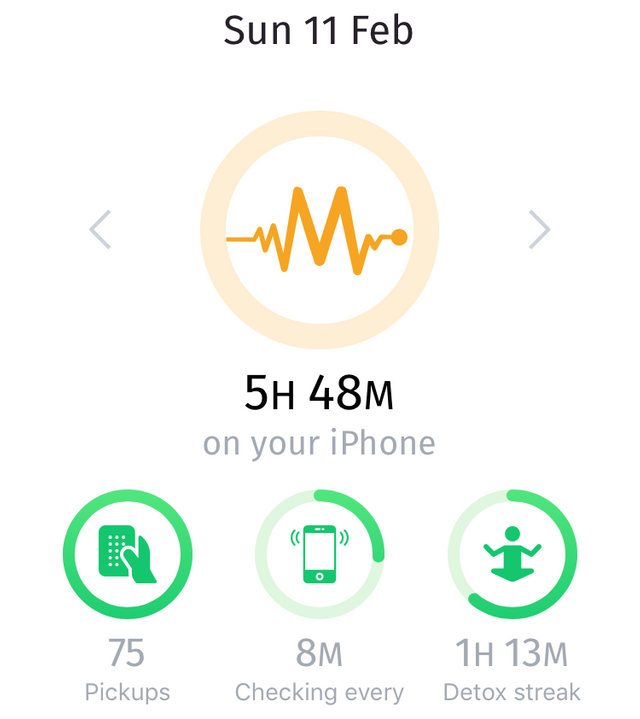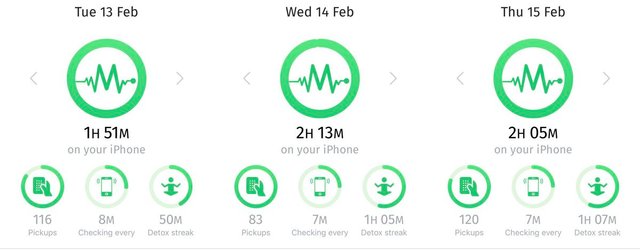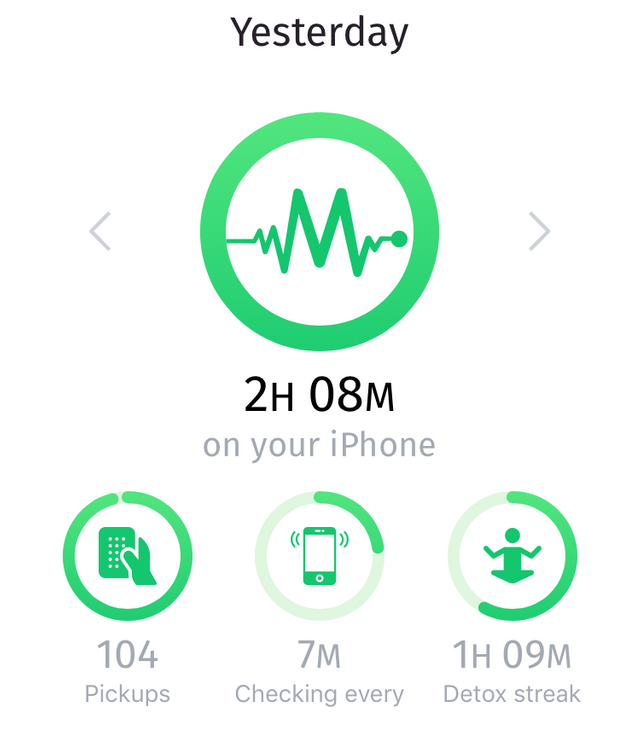How 1 app helped me tackle my iPhone addiction once and for all
/https%3A%2F%2Fblueprint-api-production.s3.amazonaws.com%2Fuploads%2Fcard%2Fimage%2F719553%2F15311694-6f74-4ac1-ac4e-2b2a0c7ee60f.jpg)
"Get your face out of your phone, Rachel. Your brother's here to spend time with you." These were the words—uttered to me by my mother during a family visit—that yanked me out of the iPhone-addicted vortex I'd fallen head over heels into.
Life was passing me by as I hunched over a tiny screen for six or seven hours a day. A screen that I seemed to deem more deserving of my time and attention than my nearest and dearest family members. I needed an iPhone detox. But, first, I needed to look up from my screen.
SEE ALSO: We don't give kids free access to junk food. We shouldn't give them free access to the iPhone.
A few weeks later, I was still staring aimlessly at my phone while waiting to board a flight for a holiday in Zanzibar, Tanzania. Right there and then, I made a promise to myself to confront my phone addiction once and for all.
The rules for the detox were straightforward and simple (in theory):
Spend fewer than two hours per day on my iPhone.
Upload my Instagram story and then exit the app within 10 minutes.
Delete Slack.
Scroll through Twitter once a day.
Send Snapchats to streaks only.
Desist from using games and dating apps.
Once I'd made a mental note of these rules, I began to take steps to create physical distance between me and my phone. I'd known for a while which apps were the biggest offenders for draining my time—based on my Battery Usage data in my Settings—so imposing nominal limits on those apps seemed like a logical step.
At night, I put my phone to charge on the other side of the room from my bed. I took a book, rather than my phone, to breakfast and lunch. I switched off mobile data. I connected to WiFi once or twice a day. I deleted Slack and I didn't miss it. I scarcely looked at Twitter and on the few occasions I did, it bored me. I sent snaps to keep my streaks in order and I didn't hang around. I tried (and struggled) to keep my Instagram time to a minimum. I estimated that I spent around roughly one hour per day on my phone, usually half an hour in the afternoon and half an hour during the evening.
<figure class="image">
Not an iPhone in sight.
</figcaption>Image: rachel thompson
But, though I might have won the battle during my vacation, I knew I'd have a full-scale war on my hands the moment I returned home.
Just as predicted, during my first weekend back in the UK, I was spending anything between four and six hours on my iPhone a day, which I would calculate by looking at Settings > Battery > Battery Usage. My self-control, it seems, had been left behind in Zanzibar.
My boss came to my rescue, thankfully, and suggested that I download an app called Mute, a screen time tracker that sends push notifications when your phone usage becomes too much. Reluctantly, I downloaded this app, which would shame me out of my desire to secretly revert back to my old iPhone-addicted ways.
My first day using Mute was a very shameful day. I spent five hours and 48 minutes on my phone and I was checking it every 8 minutes. I'd love to say that these six hours on my phone enriched my personal or professional life in some way, but in truth, I gained nothing from scrolling aimlessly through Instagram and Twitter, and fiddling around on Bumble and Pocket Camp.
A recent study found the average millennial spends 3.2 hours a day on their smartphones. The study—conducted by market researcher Kantar TNS— of over 60,000 internet users from 50 countries found that people aged between 16 and 30 spend around 22 hours a week, and 49 days a year on their smartphones.
Based on my own calculations, I was hurtling towards double the average screen time of my peers—a staggering two days each week, and almost 100 days a year. Shocking, I know.
It was as if I'd never even detoxed. Something needed to change.
<figure class="image">
Image: rachel thompson / mashable
Mute sent me push notifications after each hour spent on my phone, which kept me up to speed on how much of my day I was wasting on my phone. These notifications were mostly helpful, but some arrived at times when I couldn't actually avoid using my phone, like during FaceTime sessions with family, or while setting my alarm for the next day.
<figure class="image">
Image: rachel thompson / mashable
But, on a grander scale, this made me realise just how much I rely on my phone for practical life admin things. My phone gets me out of bed in the morning, it tells me which train I need to get, it helps me find dates.
Determined not to be shown up by an app, I attempted to create some space between me and my phone throughout the day. At work, I kept my phone on Do Not Disturb mode, and made sure it was turned screen-down. At home, I'd leave my phone in another room so I wouldn't be tempted to fiddle on my phone as I watched TV or chatted to my flatmate.
<figure class="image">
Image: rachel thompson / mashable
Still, there were moments during my working day where I found myself clutching my phone in my hand without remembering why I'd picked it up. And, even when I cut down my total time spent on my phone, I was still flipping my phone over and lighting it up to see if I had any notifications. This is something I need to work on, because it could affect my health.
Studies have looked extensively at the impact of smartphone overuse on mental health, finding links to depression, anxiety, and increased suicide rates.
One recent report published by the Association for Psychological Science looked at the recent rise in depression and suicide in adolescents, and found that teens who spent more time on smartphones were "more likely to report mental health issues" than those who spent more time on "non-screen activities" like sport, and socialising. Another study found that excessive nighttime smartphone use in young people was causing chronic sleep deprivation, which was negatively affecting their academic success.
But, once I began to reclaim that distance between me and my phone, the push notifications changed.
When I took a long break from my phone, Mute would let send me a little notification once I resumed phone use to let me know how long I'd been off my phone.
<figure class="image">
Image: rachel thompson / mashable
It also sent me notifications comparing my usage, letting me know if I'd shown an improvement the previous day.
<figure class="image">
Image: Rachel Thompson / mashable
With a little help from this app, I've managed to keep my holiday iPhone detox going for two weeks. And, I plan to keep it that way. My screen time is currently skirting around the two hour mark, but I'd like to try to reduce that.
Overall, I've noticed that I feel significantly less anxious. I have less trouble getting to sleep at night, and I feel better rested every morning. During a trip to visit my parents, my mother spotted a marked difference in my wellbeing, and told me I seemed significantly happier and more relaxed.
While my screen time isn't too bad during the week, it appears that my usage creeps up a little on weekends and edges a little bit too close to the three-hour part. This is something I'll need to keep a watchful eye on, too.
<figure class="image">
Mute has drawn my attention to a few other iPhone-related habits, too. Like, picking up my phone more than 100 times a day. Checking it every few minutes. And, based on my location data, the majority of my screen-time happens at home, meaning evenings are my iPhone downfall.
There's a long road ahead of me, but my holiday detox combined with Mute have shown me that I'm capable of reclaiming my screen time. My face is finally out of the screen, and I plan to keep it out.
WATCH: Here's what we think about Apple's HomePod
<iframe src="
Read more: https://mashable.com/2018/02/22/iphone-addiction-detox/
Posted from my blog with SteemPress : https://arwebhosting.com/blog/how-1-app-helped-me-tackle-my-iphone-addiction-once-and-for-all/